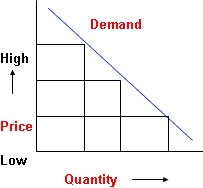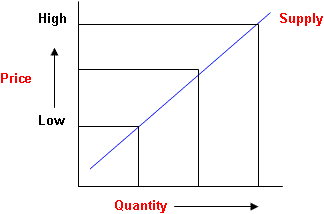
Fundamental Analysis
Fundamental analysis is the study of the factors that affect supply and demand of any particular asset class. Gathering and interpreting information pertaining to demand and supply of commodities is important in understanding commodity price behavior. To gain a better understanding of the demand-supply dynamics, we need to know the laws of demand and supply and how these factors affect the final price.
General economic principle says demand and supply determines price. This is true for commodity market too. But factors affecting demand and supply are diverse and independent having different origin. Therefore, prices of commodity fluctuate so often that it becomes difficult to determine the exact price at a particular point of time. Since commodity price for which future trading is done, is volatile and changes on real time basis, for traders of future market, it is important to know, where price is likely to head sometime down the line. Traders, speculators, hedgers all anticipate price movements and take appropriate position in the markets.
Fundamental analysis of any commodity involves knowing following facts
- Production and consumption.
- Import and export
- Distance between consuming centers to producing center,
- Cost of transportation,
- Means of transportation,
- Usual trade practice
- Cultivation period
- Impact of weather and technology on crop cultivation.
- Scope and potential of production and consumption for particular commodity and its
- Rivalry with other similar kind of commodity that may in turn may be near substitute for it.
- Value chain of the commodity and influence of stakeholders at different levels in value chain.
- Taxation, such as sales tax, import tax, export tax, custom duty, and others.
- Import and export regulations,
- Inflation,
- Foreign currency exchange rate,
- Government interference,
- Presence of organized institutions,
- Groups and their influence on trading community pertaining to particular commodity.
LAW OF DEMAND
The key components of this economic theory are consumer behavior, and how individual consumer responses are reflected in the market place. Understanding what factors have affected demand in the past will help to develop expectations about demand in the future and the impact on market price.
Thus, demand is a relationship between price and quantity, with all other factors remaining constant. Demand is represented graphically as a downward sloping curve with price on the vertical axis and quantity on the horizontal axis.

Generally, the relationship between price and quantity is negative. This means that the higher is the price level the lower will be the quantity demanded and, conversely, the lower the price the higher will be the quantity demanded. Market demand is the sum of the demands of all individuals within the marketplace. Market demand will be affected by other variables in addition to price, such as various value added services including handling, packaging, location, quality control, and financing. Thus, the demand for an agricultural commodity is typically derived from the demand for a finished product.
Ultimately, the market value for any good or service is determined by its value to the consumer. It is important to understand that a free market economy is driven not by producers, but by consumers. Higher prices can lead to higher profits, which provide you with the incentive and the means to expand production of those goods and services that consumers value the most. On the other hand, when consumers are unwilling to buy what is offered at the current price, the seller will have to lower the price ultimately resulting in lower profits. Losses reduce the producer's incentive to produce things that have weak demand, which will ultimately force production cuts as farmers lose more and more money.
This is the discipline of the marketplace. Those who produce things that consumers are willing and able to buy are rewarded. Those who produce things that consumers don't want or can't buy are penalized. Farmers must produce for the markets. They cannot expect to find or create a profitable market for whatever they choose to produce.
LAW OF SUPPLY
Supply is another important component of fundamental commodity market analysis. An understanding of the factors affecting supply in the past will help with the development of supply expectations in the future and the impact upon market price.
The law of supply can be approached from two different contexts. The first is that it represents the sum total of production plus carryover stocks. The other context for supply describes the behavior of producers. The total supply is the sum of the individual quantities of product that each farmer brings to the market. Market supply is represented by an upward sloping curve with price on the vertical axis and quantity on the horizontal axis.

An increase in price in most instances will result in farmers wanting to increase the quantity of a given product they will bring to the market; therefore, the relationship between the price and supply is positive. Market supply will be affected by other variables in addition to the price. Factors that have been identified as important in determining supply behavior include; the number of firms producing the product, technology, the price of inputs, the price of other commodities, which could be produced, and the weather. Lower prices are the market's signal to farmers that they have produced too much of something or that it is something consumers do not want.
|